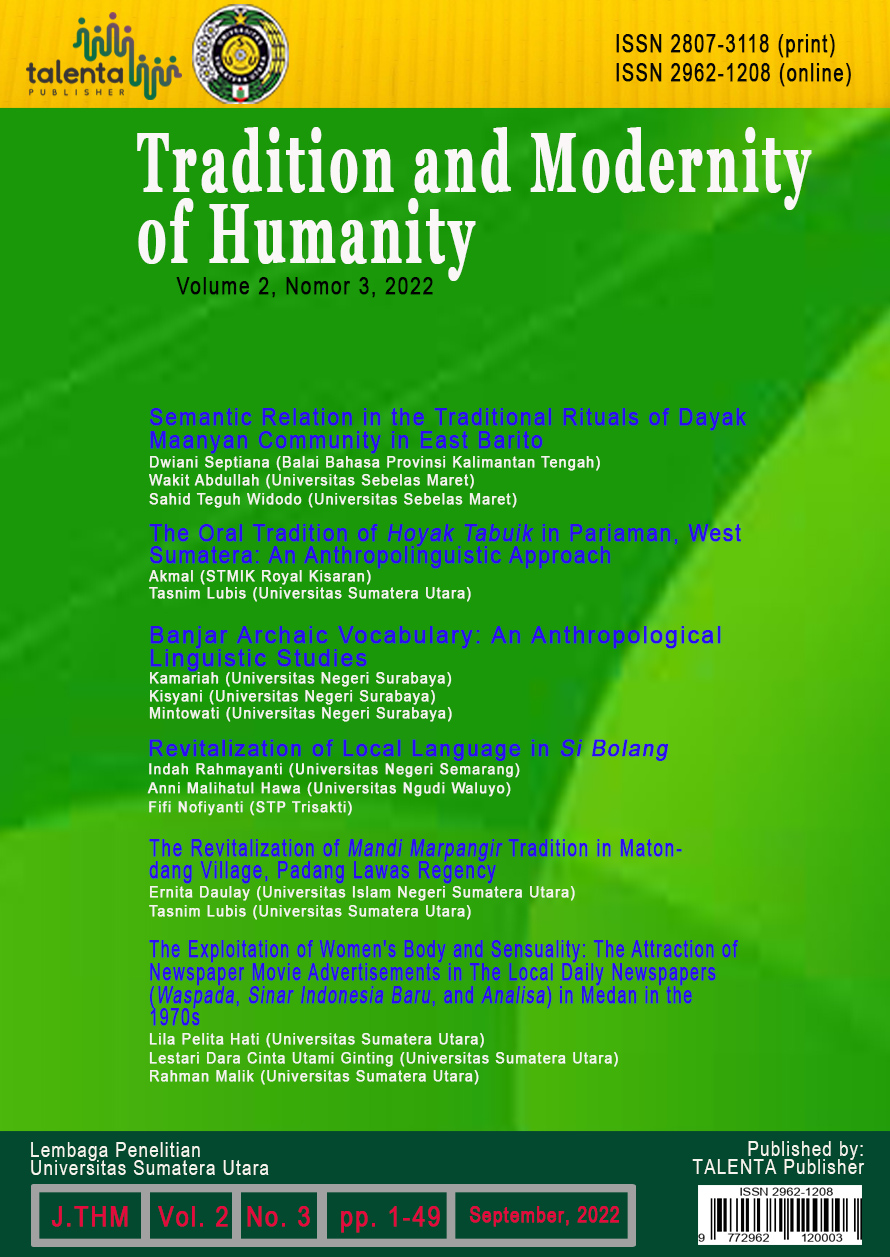Semantic Relation in the Traditional Rituals of Dayak Maanyan Community in East Barito
DOI:
https://doi.org/10.32734/tmh.v2i3.10145Keywords:
Maanyan language, traditional ritual, semantic relationAbstract
The Dayak Maanyan community recognizes two types of languages. The language used daily and the language used in traditional rituals. The language used in the ritual is arranged in the form of paired clauses with similar meanings. This article will examine the meaning relation between words in the paired clauses. The research was conducted in the East Barito district, Central Kalimantan province. This study's data collection area is the East Hamlet District in Jaar Village. Documentation of data in ritual leader utterances is done by transcribing recorded speeches during the ritual and recordings during direct interviews with ritual leaders to obtain the entire content of the ritual speech. Based on the results of data analysis from 840 pairs of transcribed clauses, The researcher found that the relation of synonymous meaning dominated the relation of meaning between the two clauses. The researcher also found the meaning relationship between class inclusion and meronymy and case relation. The pattern of meaning relations formed from the words in the paired clauses is that a is equal to b, b is a type of a, a is a component of b, a is a member of b, place b is part of the area of a, b is made of a, a has b, a is related to b, a is b, a does b, a becomes b, does a is accepted by b, does a uses b, does a aims to b.
Downloads
Downloads
Published
Issue
Section
License
Copyright (c) 2022 Tradition and Modernity of Humanity

This work is licensed under a Creative Commons Attribution-ShareAlike 4.0 International License.






